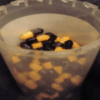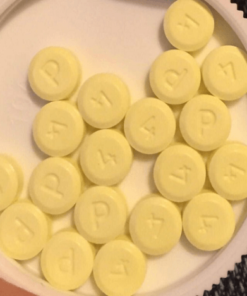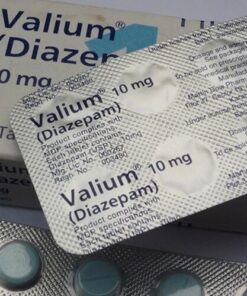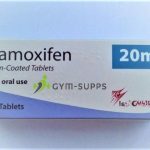Dexedrine Dextroamphetamine 5 mg
kr1,700.00
Dextroamphetamine (American English) or dexamphetamine (Commonwealth English) is a powerful stimulant for the central nervous system (CNS) and amphetamine antiomas prescribed for the treatment of ADHD (ADHD) and narcolepsy.
Dexedrine Dextroamphetamine 5 mg (American English) or https://fantastiskmedicineapotek.com/product/ dexedrine-dextroamphetamine-5-mg /(Commonwealth English) is a strong stimulant from the central nervous system (CNS) and amphetamine enantiomer prescribed for the treatment of ADHD (ADHD) and narcolepsy. It is also used as an athletic performance and cognitive enhancer, and recreationally as an aphrodisiac and euphoric. Dexedrine Dextroamphetamine 5 mg is also widely used by military forces as a “go-pill” during fatigue-promoting mission profiles such as night bombing missions. https://fantastiskmedicineapotek.com/product/ dexedrine-dextroamphetamine-5-mgcontaining Dexedrine Dextroamphetamine 5 mg were also used during World War II as a treatment for fatigue.
The amphetamine molecule exists as two enantiomers (ie two different molecules that are mirror images of each other), levoamphetamine and dextroamphetamine. Dextroamphetamine is the more active dextrorotatory, or ‘right-handed’, enantiomer of the amphetamine molecule. Pharmaceutical dextroamphetamine sulfate is available as both a brand name and a generic drug in various dosage forms. Dexedrine Dextroamphetaminehttps://fantastiskmedicineapotek.com/product/ dexedrine-dextroamphetamine-5-mg /s sometimes prescribed as the inactive drug lisdexamphetamine dimesylate, which is converted to dextroamphetamine after absorption.
Dexedrine Dextroamphetamine 5 mg, like other amphetamines, induces its stimulating effects through several different actions: it inhibits or reverses the transport proteins of monoamine neurotransmitters (namely serotonin, norepinephrine and dopamine transporters) either via trace amine-associated receptor 1 (TAARAR1) or a TAARAR1 way when there are high cytosolic concentrations of monoamine neurotransmitters and it releases these neurotransmitters from synaptic vesicles via vesicular monoamine transporters 2. It also shares many chemical and pharmacological properties with human trace amines, especially phenethylamine and N-methylphenethylamine, the latter being an isomer of amphetamine in the human body.
Dexedrine Dextroamphetamine 5 mg is used to treat ADHD (ADHD) and narcolepsy (a sleep disorder), and is sometimes prescribed outside the label for previous medical indications, such as depression and obesity. Prolonged exposure to amphetamines at sufficiently high doses in some animal species is known to produce abnormal dopamine system development or nerve damage, but in people with ADHD, pharmaceutical amphetamines appear to improve brain development and nerve growth. Reviews of magnetic resonance imaging (MRI) studies suggest that long-term treatment with amphetamines reduces abnormalities in brain structure and function found in people with ADHD and improves function in several parts of the brain, such as the right cudate nucleus in the basal ganglia. .
Reviews of clinical stimulant research have established the safety and efficacy of long-term use of amphetamines for ADHD. Controlled studies spanning two years have shown treatment efficacy and safety. A review highlighted a nine-month randomized controlled trial in children with ADHD that found an average increase of 4.5 IQ scores, a continued increase in attention and a continued decrease in disruptive behaviors and hyperactivity.
Current models of ADHD suggest that it is associated with disabilities in some of the brain’s neurotransmitter systems; these impairments involve decreased dopamine neurotransmission in the mesocorticolimbic projection and norepinephrine neurotransmission in the locus coeruleus and prefrontal cortex. Psychostimulants such as methylphenidate and amphetamine are effective in treating ADHD because they increase neurotransmitter activity in these systems. About 80% of those who use these stimulants see improvements in ADHD symptoms. Children with ADHD who use stimulant medications generally have better relationships with peers and family members, do better in school, are less distracting and impulsive, and have longer attention span. Cochrane Collaboration’s reviews on the treatment of ADHD in children,
Adolescents and adults with pharmaceutical amphetamines stated that although these drugs improve short-term symptoms, they have higher interruptions than drugs that are not stimulants due to their negative side effects. A Cochrane Collaboration review of the treatment of ADHD in children with tic disorders such as Tourette’s syndrome showed that stimulants generally do not cause ticsworse, but high doses of dextroamphetamine may worsen tics in some individuals.
Performance enhancement
In 2015, a systematic review and meta-analysis of high-quality clinical trials found that when used in low (therapeutic) doses, amphetamines produce modest but unambiguous improvements in cognition, including working memory, long-term episodic memory, inhibitory control, and certain aspects of attention. in normal healthy adults; the cognitive-enhancing effects of amphetamine are known to arise through its indirect activation of both dopamine receptor D1 and adrenoceptor a2 in the prefrontal cortex. A systematic review from 2014 showed that low doses of amphetamine also improve memory consolidation, which in turn led to improved recall of information. Therapeutic doses of amphetamine also improve cortical network efficacy. an effect that conveys improvements in the working memory of all individuals. Amphetamines and other ADHD stimulants also improve task ability (motivation to perform a task) and increase arousal (alertness), which in turn promotes goal-directed behavior. Stimulants such as amphetamines can improve the performance of difficult and tedious tasks and are used by some students as a study and testing aid. Based on studies of self-reported illegal stimulant use, 5–35% of students use derived ADHD stimulants, which are primarily used for performance enhancement rather than as recreational drugs. However, high doses of amphetamine above the therapeutic range can interfere with working memory and other aspects of cognitive control. Amphetamines and other ADHD stimulants also improve task ability (motivation to perform a task) and increase arousal (alertness), which in turn promotes goal-directed behavior. Stimulants such as amphetamines can improve the performance of difficult and tedious tasks and are used by some students as a study and testing aid. Based on studies of self-reported illegal stimulant use, 5–35% of students use derived ADHD stimulants, which are primarily used for performance enhancement rather than as recreational drugs. However, high doses of amphetamine above the therapeutic range can interfere with working memory and other aspects of cognitive control. Amphetamines and other ADHD stimulants also improve task ability (motivation to perform a task) and increase arousal (alertness), which in turn promotes goal-directed behavior. Stimulants such as amphetamines can improve the performance of difficult and tedious tasks and are used by some students as a study and testing aid. Based on studies of self-reported illegal stimulant use, 5–35% of students use derived ADHD stimulants, which are primarily used for performance enhancement rather than as recreational drugs. However, high doses of amphetamine above the therapeutic range can interfere with working memory and other aspects of cognitive control. Stimulants such as amphetamines can improve the performance of difficult and tedious tasks and are used by some students as a study and testing aid. Based on studies of self-reported illegal stimulant use, 5–35% of students use derived ADHD stimulants, which are primarily used for performance enhancement rather than as recreational drugs. However, high doses of amphetamine above the therapeutic range can interfere with working memory and other aspects of cognitive control. Stimulants such as amphetamines can improve the performance of difficult and tedious tasks and are used by some students as a study and testing aid. Based on studies of self-reported illegal stimulant use, 5–35% of students use derived ADHD stimulants, which are primarily used for performance enhancement rather than as recreational drugs. However, high doses of amphetamine above the therapeutic range can interfere with working memory and other aspects of cognitive control.
Amphetamine is used by some athletes for its psychological and athletic performance-enhancing effects, such as increased endurance and alertness; However, non-medical amphetamine use is prohibited at sporting events regulated by anti-doping agencies, collegial, national and international. In healthy people at oral therapeutic doses, amphetamine has been shown to increase muscle strength, acceleration, athletic performance in anaerobic conditions and endurance (ie it delays the onset of fatigue), while improving reaction time. Amphetamine improves endurance and reaction time primarily through reuptake inhibition and outflow of dopamine in the central nervous system. Amphetamine and other dopaminergic drugs also increase power output at fixed levels of perceived effort by overriding a “safety switch” that increases the core temperature limit to access a reserve capacity that is normally outside the limits. At therapeutic doses, the adverse effects of amphetamine do not hinder athletic performance; however, in much higher doses, amphetamine can induce effects that severely impair performance, such as rapid muscle breakdown and elevated body temperature.
Recreational
Dexedrine Dextroamphetamine 5 mg is also used recreationally as a euphoric and aphrodisiac, and like other amphetamines is used as a club medicine for its energetic and euphoric highs. Often taken in higher doses than those prescribed by doctors, Dexedrine Dextroamphetamine 5 mg is considered to have a great potential for abuse in a recreational way, where users report feelings of increased mood, increased alertness and energy after taking the drug. Adverse effects of recreational use include, but are not limited to, blurred vision, increased body temperature, increased heart rate (tachycardia), decreased speech, and usually only in very high doses, feelings of paranoia and psychotic episodes. Dexedrine capsules can be opened and the contents crushed and snored, or dissolved in water and injected. Injection into the bloodstream can be dangerous because insoluble fillers in the tablets can block small blood vessels. Overuse of amphetamines over time can cause severe drug dependence.
Be the first to review “Dexedrine Dextroamphetamine 5 mg” Cancel reply
Related products
ORAL STEROID
ORAL STEROID
PILLS
ORAL STEROID
PILLS
ORAL STEROID












Reviews
There are no reviews yet.